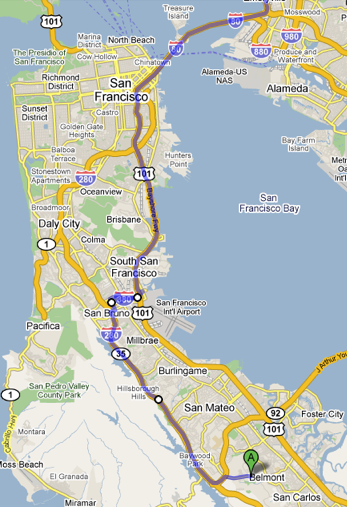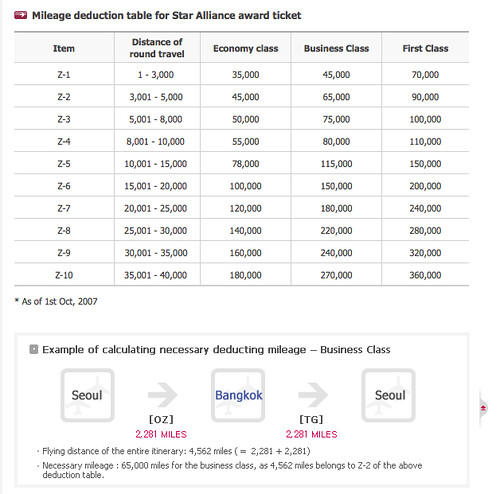Better use your United 500-mile upgrades in light of 2010 Mileage Plus program changes
by administrator on Dec.02, 2009, under Airlines
United Airlines (UAL) has announced 2010 Mileage Plus program changes that will end of 500 mile certificates a few weeks ago. Starting in the second quarter (probably July) of 2010, United Premier members would get upgrades to first or business class based on availability – similar to Continental, Delta and USAir. This leaves American Airlines to be the only major carrier still requiring certificates for upgrades.
This is a positive move by UAL. However they didn’t tell you the following:
1. United complimentary upgrades are not available for P.S. (Premium Service) flights. United P.S. are flights between New York and San Francisco and Los Angeles. This means your coast-to-coast travel cost would go up as economy seats generally fills up the fastest (see previous post regarding best coast-to-coast travel option). This forces united customers to buy business class tickets. You can however use redeem miles to upgrade on these flights, and if you are 1K you will still receive Confirmed Regional and Systemwide Upgrades and may use them on these flights as well.
2. Your United 500-mile certificates would be useless if you don’t use them. UAL used to convert the 500-mile certificates into miles and put them in your Mileage Plus account. With the devaluation of airline miles and airline cut backs, UAL does not endorse expiring 500 mile certificates nor do they convert the miles for flight redemption.
3. Complimentary upgrades are limited to flights within Region 1 only, which includes the continental United States, Hawaii, Alaska, Canada, the Caribbean, Central America and Mexico. Also, award flights are not eligible for the complimentary upgrades. Not much different than the 500-mile certificate model.
United Premier and Premier Executive statuses become absolutely worthless. Good luck trying to get upgraded with all the people that made Premier Exec and 1K (us included) in 2009 for 2010 thanks to the 2 double EQM (and one EQS) promotions.
Another collaboration post from Statusmonger & Captain G
Fastest way from the South Bay to San Francisco & SFO
by Captain G on Nov.23, 2009, under Business Travel, Vacation
Getting from south of San Mateo (or south of the 92) to San Francisco International Airport (SFO), San Francisco, or Oakland International Airport (OAK) via the Bay Bridge – fast – is possible, and easy. Just memorize the following:
2. 280 is generally clear both north and south bound. Take 280 instead of the 101 whenever you can. However, 280 can get backed up when you reach Daly City.
If you can get to the 92 (Belmont area), take the following route and I can personally guarantee you can be at SFO in less than 20 minutes and to San Francisco in less than 35 minutes, at any time during the day. I can’t guarantee the commute time to OAK, unfortunately, as the on-ramp to the Bay Bridge and beyond is too much of a wild card.
Here’s what you will need to do to avoid the dreaded 101 traffic to SFO and the city:
 1. Take 280 northbound. If you’re already on the 101, you can catch the 280 by taking 92 east. It may seem out of the way but the 7 miles or so to go from the 101 to 280 via the 92 will save you 15 minutes.
1. Take 280 northbound. If you’re already on the 101, you can catch the 280 by taking 92 east. It may seem out of the way but the 7 miles or so to go from the 101 to 280 via the 92 will save you 15 minutes.
2. Stay on 280 until you are on 380 west. Take 380 west towards SFO. This route also works if your heading to the city or Oakland. Going from 280 to 380 drops you back on the 101.
3. From 380, get back on the 101 north. By taking 280 to 380 and then back to the 101, you have avoided one of the worst bottlenecks in the Bay Area. The stretch on the 101 from Belmont to SFO can take 45 minutes due to heavy traffic merging from the 92 (folks coming from Foster City and the East Bay). The turn at Burlingame also causes congestion because of sun glare during rush hour.
Going back from 280 to the 101 once you’ve passed SFO is also a much shorter commute than taking 280 directly into San Francisco. You’ll rarely run into traffic from SFO to the city using this route unless there’s a 49ers game.
3a. After you’ve passed Candlestick Point on the 101, you’ll have the option to stay on 101 north or go back on the 280 north. You’ll have to make a gut decision here: 101 north could be backed up due to the Bay Bridge on-ramp traffic; but 280 north could also be backed up due to a Giants game on the Embarcadero.
Staying on 101 north is the most direct route. If you prefer to take 280 north and want to get back on the Bay Bridge, here’s a shortcut:
1. Exit on King street
2. Make a left on 3rd Street
3. Make a right on Bryant
4. You will see an on-ramp to the Bay Bridge once you’ve passed 2nd Street
Happy travels.
British Airways and Asiana Credit Cards, Worth the Hassle?
by statusmonger on Nov.06, 2009, under Airlines, Business Travel, Hotels, Travel Partners
I already have the SPG AMEX, which I think is the best travel credit card out there. You get 1 point/$1 for everyday purchases. You get an additional 2 points/$1 for stays at SPG properties (W, Westin, Sheraton, Le Meridian, Four Points and more). If you are Gold or Platinum SPG member, you get 3 points/$1 instead of 2 points for stays at SPG properties. You can earn Gold status at SPG by spending $30,000 on the card in a calendar year. A SPG night redemption runs around 10,000 points for a decent property. So that’s about a $200 return for $10,000 spent on the card. Not only that, the SPG AMEX allows you to transfer points to airlines miles at a 1:1 point to mile ratio, with a 5000 miles bonus for every 20,000 points transferred to miles. So if you transfer 20,000 points to an airline mileage account, you would get 25,000 miles, usually good for a free domestic flight. The card has an annual fee of $45 that is far less than the annual fees of airline cards, which run about $75-$100. Lastly, I think SPG is the best hotel program out there and hotel points are far better than airline miles.
However, there have been 2 recent airline card offers that have been tempting, but not sure if its worth the hassle.
Firstly, the British Airways Visa Signature Card. What’s so special about this card? Well not much but the current promotion is probably the best signup promotion I’ve seen yet. You get 50,000 miles for your first purchase on the card and then another 50,000 miles if you spend $2000 in first 3 months, which is easily doable. That’s a total of 100,000 miles, which gets you 2 free transatlantic flights from the US to Western Europe in economy. You also get a free companion voucher valid for 2 years for spending $30,000 on the card in a calendar year. The downside of the card? First, the annual fee is $75. Also, personally I don’t ever fly British Airways and I don’t fly any of the airlines in One World, which includes American Airlines. Star Alliance is probably the best airlines alliance out there especially now that Continental has defected over to them from Sky Team.
Speaking of Star Alliance, this brings me to the 2nd card on my mind: the Asiana AMEX from Bank of America. You earn 2 miles per $1 spent on the card, which literally unheard of for airline credit cards. Although the card has an annual fee of $99 this offset by the fact that the card offers an $100 annual rebate towards the purchase of Asiana Airlines ticket. You also get a 10,000 Bonus miles Certificate every year in the month of your anniversary date of the card. This is good towards a choice of an international or Korea domestic air ticket, a seat class upgrade or an excess bag allowance. But its use it or lose it annually. Also, there are a couple great things about Asiana Airlines. First, as I alluded to before, Asiana is a part of Star Alliance, which consists of 25 member airlines such as United, Continental, US Airways, Lufthansa, BMI, Air China, ANA, and Singapore Airlines. Below is the Asiana Star Alliance award ticket redemption chart:

This redemption policy also allows you to redeem a one-way ticket instead being forced to redeem a roundtrip. Additionally, another great thing about Asiana is their favorable status qualification. See my previous post about this. Basically you just need 40,000 miles in 2 years to get Star Alliance Gold (Asiana Diamond). This doesn’t have to be on Asiana but you can use any miles flown on Star Alliance partners for status qualification. In contrast, you need to fly 50,000 miles with United in one calendar year to get Star Alliance Gold (United Premier Executive). Recently, after hitting 1K with United, I’ve been banking all my United miles to my Asiana account.
So what’s the verdict? If you are willing to deal with getting the BA Visa and then canceling after 3 months, the $75 annual fee is definitely worth the 2 round trip tickets to Western Europe. If you fly Star Alliance frequently, especially to Asia, and don’t have any other credit cards with an annual fee, then I think making the Asiana AMEX your primary credit card is a great deal. If none of these sound appealing enough, do look at the SPG AMEX.